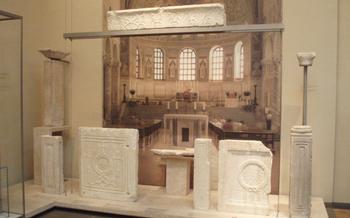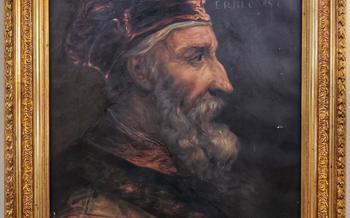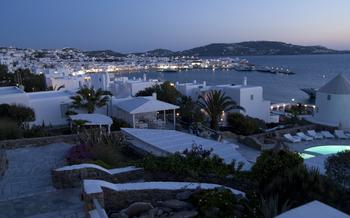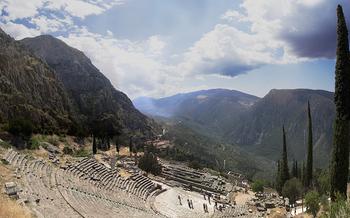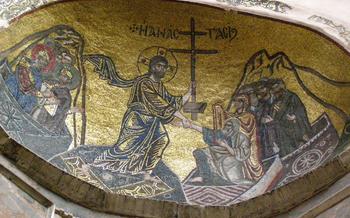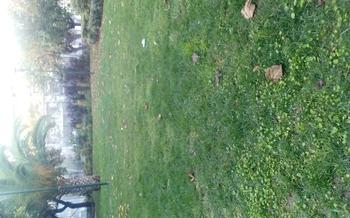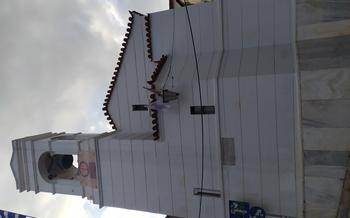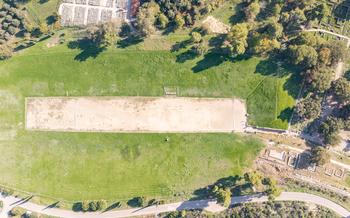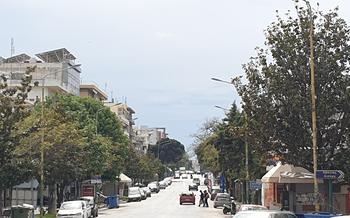
Daphni Monastery
- A Byzantine Gem: Unveiling the Daphni Monastery's History
- Mosaics that Speak: Exploring the Monastery's Stunning Artworks
- Step into the Past: A Journey Through the Monastery's Grounds
- Religious Significance: The Daphni Monastery's Spiritual Role
- A Living Legacy: The Restoration and Conservation of the Monastery
- Transportation Tips: Reaching the Daphni Monastery with Ease
- Hours of Operation: Planning Your Visit to the Monastery
- Admission Fees and Practicalities: Preparing for Your Visit
- A Photographic Journey: Capturing the Beauty of the Monastery
- Souvenirs and Mementos: Preserving Your Memories of the Monastery
- Local Cuisine: Savoring Authentic Greek Flavors Nearby
- Combining History and Nature: Exploring Nearby Sites
- Local Festivals and Events: Immersing Yourself in Greek Culture
- Accommodations: Finding Your Perfect Stay Near the Monastery
- Insider Tip: Discovering Hidden Gems Off the Beaten Path
A Byzantine Gem: Unveiling the Daphni Monastery's History
Nestled amidst the serene landscapes of Chaidari, Greece, the Daphni Monastery stands as a testament to the rich history and artistic legacy of the Byzantine Empire. Its construction dates back to the 11th century, during a period marked by the empire's cultural and political resurgence. The monastery's founders, the wealthy Dalassenos family, played a pivotal role in shaping the architectural and artistic style of the building.
Influenced by both Eastern and Western traditions, the Daphni Monastery showcases a harmonious blend of Byzantine and classical elements. The intricate mosaic decorations adorning its interior, a hallmark of Byzantine art, depict biblical scenes and symbolic representations with exceptional skill and artistry.
In recognition of its outstanding universal value, the Daphni Monastery was inscribed as a UNESCO World Heritage Site in 1990. This prestigious designation underscores the monastery's significance as a symbol of Byzantine heritage and a testament to the enduring legacy of this remarkable civilization.
Mosaics that Speak: Exploring the Monastery's Stunning Artworks
The Daphni Monastery is renowned for its exquisite mosaic decorations that adorn the interior of the church. These mosaics are considered masterpieces of Byzantine art and depict a variety of biblical scenes and symbolic representations. The craftsmanship and artistic techniques employed in these mosaics are truly remarkable, showcasing the skill and dedication of the Byzantine artisans.
One of the most striking mosaics is located in the dome of the church, depicting Christ Pantocrator, or Christ the Almighty. This majestic mosaic portrays Christ seated on a throne, surrounded by a celestial aura and flanked by angels. The intricate details and vibrant colors used in this mosaic create a sense of awe and reverence.
Other notable mosaics in the monastery include scenes from the life of Christ, such as the Annunciation, the Nativity, and the Crucifixion. These mosaics vividly narrate the biblical stories, allowing visitors to connect with the spiritual significance of these events.
The Daphni Monastery's mosaics have undergone extensive restoration efforts over the years to preserve their beauty and integrity. These restoration projects have been meticulously carried out to ensure that future generations can continue to appreciate these stunning artworks.
Step into the Past: A Journey Through the Monastery's Grounds
As you wander through the gates of the Daphni Monastery, a sense of serenity washes over you, enveloping you in the tranquility of the sacred grounds. Ancient olive trees, gnarled and wise, stand guard, their gnarled branches reaching towards the sky like silent witnesses to centuries of history. Lush gardens, meticulously manicured, burst forth with vibrant colors, a testament to the care and devotion of the monks who once tended them.
The monastery's architecture, a harmonious blend of Byzantine and Greek Orthodox styles, reveals itself as you explore further. Intricate carvings and decorative elements adorn the buildings, whispering tales of the artisans who painstakingly crafted them. Every corner, every archway, holds a story, inviting you to step into the past and immerse yourself in the rich tapestry of Byzantine history.
Take a moment to pause and admire the monastery's iconic bell tower, its graceful silhouette piercing the clear blue sky. Listen to the gentle chime of the bells, echoing through the air, a melodious reminder of the monastery's enduring presence. As you wander through the cloisters, imagine the footsteps of monks echoing through the centuries, their prayers and chants filling the air with devotion.
Religious Significance: The Daphni Monastery's Spiritual Role
The Daphni Monastery holds profound religious significance as a cornerstone of Orthodox Christianity in Greece. Its deep-rooted spiritual heritage attracts numerous pilgrims and devout worshippers who seek solace and connection with their faith. The monastery's sacred atmosphere invites visitors to immerse themselves in its spiritual essence, fostering a sense of peace and tranquility.
Throughout the centuries, the monastery has served as a hub for religious ceremonies, rituals, and celebrations. It remains an active place of worship, where monks and priests conduct daily prayers, liturgies, and special services. Visitors are welcome to observe these ceremonies and experience the vibrant spiritual energy that permeates the monastery grounds.
Beyond its religious practices, the Daphni Monastery represents a symbol of unity and harmony among different faiths. Its architecture and mosaics reflect influences from various cultures and traditions, demonstrating the monastery's role in promoting interfaith dialogue and understanding.
For those seeking a deeper spiritual connection, the monastery offers a sanctuary for reflection and contemplation. Its serene environment and stunning artwork provide an ideal setting for personal introspection and communion with the divine.
A Living Legacy: The Restoration and Conservation of the Monastery
The Daphni Monastery has undergone extensive restoration efforts to preserve its integrity and protect its invaluable heritage. These projects, carried out in collaboration with experts, authorities, and dedicated organizations, have aimed to restore the monastery to its former glory while ensuring its longevity for future generations.
Balancing the delicate task of conservation with the need for accessibility has been a key challenge. Restoration work has involved careful cleaning and restoration of the mosaics, structural reinforcement to ensure the stability of the buildings, and the preservation of architectural details.
The ongoing efforts to conserve the Daphni Monastery are a testament to the enduring value of Byzantine heritage and the importance of preserving cultural treasures for the enjoyment and education of future generations. The restored monastery stands as a living testament to the artistic and spiritual legacy of Byzantium, inviting visitors to explore its rich history and marvel at its stunning beauty.
Transportation Tips: Reaching the Daphni Monastery with Ease
The Daphni Monastery is easily accessible from Athens city center, making it a convenient destination for day-trippers and visitors with limited time. Public transportation options are reliable and affordable, offering a direct route to the monastery's entrance. Several bus lines depart from various locations in Athens, including Syntagma Square and Omonia Square, providing a scenic journey through the city's bustling streets and charming neighborhoods. Alternatively, guided tours and organized excursions often include transportation from Athens, allowing visitors to relax and enjoy the ride without worrying about navigation or schedules. For those who prefer the flexibility of self-guided exploration, driving to the monastery is also a viable option. Ample parking is available on-site, ensuring a stress-free arrival for those traveling by car.
Hours of Operation: Planning Your Visit to the Monastery
To ensure a seamless and enjoyable visit to the Daphni Monastery, it's crucial to be aware of its operating hours. The monastery typically opens its doors to visitors from Tuesday to Sunday, with specific hours varying depending on the season. During the summer months (April to October), the monastery is open from 9:00 AM to 5:00 PM, while in the winter months (November to March), the hours are slightly shorter, from 9:00 AM to 3:00 PM.
Special closures may occur on certain holidays or for maintenance purposes, so it's advisable to check the monastery's official website or contact local tourist information centers for up-to-date information. To fully appreciate the monastery's beauty and tranquility, consider avoiding peak tourist hours, which typically fall between 11:00 AM and 3:00 PM. By arriving early or later in the day, you can immerse yourself in the monastery's serene atmosphere without the crowds.
Admission Fees and Practicalities: Preparing for Your Visit
Before embarking on your journey to the Daphni Monastery, it's essential to be aware of the admission fees and practicalities involved. The monastery charges a modest entrance fee, which helps support its ongoing maintenance and preservation efforts. This fee can be paid in cash or via credit card at the ticket office located near the entrance.
Guided tours are available for those who wish to delve deeper into the monastery's history and significance. These tours are conducted by knowledgeable guides who provide insights into the architecture, mosaics, and religious importance of the site. Audio guides are also available for rent, offering a self-guided tour experience with recorded commentary.
When visiting the monastery, it's important to dress appropriately out of respect for its religious significance. While there is no strict dress code, modest attire that covers shoulders and knees is generally recommended.
The monastery provides essential amenities for visitors, including restrooms, a small gift shop, and a drinking fountain. However, it's advisable to bring your own water bottle, especially during the hot summer months.
A Photographic Journey: Capturing the Beauty of the Monastery
The Daphni Monastery presents a unique opportunity to capture the essence of Byzantine art and architecture through photography. While respecting the monastery's sacred nature, visitors are welcome to take photographs to preserve their memories and share the beauty of the site with others.
To ensure the best photographic results, consider utilizing natural light, which beautifully illuminates the mosaics and architectural details. Experiment with different angles to find unique perspectives that showcase the monastery's grandeur.
Remember to be respectful of other visitors and avoid using flash photography, as it can be disruptive during religious services or guided tours. By following these guidelines, you can capture stunning images that will serve as a lasting reminder of your visit to the Daphni Monastery.
Share your experiences and photographs on social media, using relevant hashtags to connect with other travelers and enthusiasts. Your images can inspire others to explore this hidden gem and contribute to the preservation of its cultural heritage.
Souvenirs and Mementos: Preserving Your Memories of the Monastery
As you bid farewell to the Daphni Monastery, don't forget to take a piece of its history and beauty home with you. The on-site gift shop offers a range of souvenirs and religious items that will serve as lasting mementos of your visit.
Browse through unique handicrafts and locally made products, each infused with the spirit of Greek artistry. Find intricate ceramic pieces, hand-woven textiles, and traditional jewelry that reflect the region's rich cultural heritage.
For those seeking a deeper connection to the monastery's spirituality, an array of religious items awaits. Purchase icons depicting saints and biblical scenes, or choose from a selection of candles and prayer beads. These sacred objects will serve as tangible reminders of your pilgrimage to this sacred site.
In addition to the gift shop, consider purchasing books and postcards that delve into the history, architecture, and art of the Daphni Monastery. These publications will provide a lasting record of your visit, allowing you to relive the experience and share your knowledge with others.
By supporting the local artisans and craftsmen through your purchases, you contribute to preserving the cultural heritage of the region. Your patronage helps ensure that these traditions continue to thrive for generations to come.
Local Cuisine: Savoring Authentic Greek Flavors Nearby
A visit to the Daphni Monastery offers an opportunity to indulge in the culinary delights of Greece. The surrounding area boasts traditional Greek tavernas and restaurants, where you can savor authentic flavors and immerse yourself in the local culture.
For a true taste of Greek cuisine, try dishes such as moussaka, a hearty casserole made with layers of eggplant, potatoes, and ground beef, topped with a creamy béchamel sauce. Sample the delicious souvlaki, grilled skewers of meat or vegetables, often served with pita bread, tzatziki, and fresh vegetables. Don't miss out on the classic Greek salad, a refreshing combination of tomatoes, cucumbers, onions, feta cheese, and Kalamata olives, drizzled with olive oil and oregano.
To enhance your culinary experience, choose a taverna with a charming outdoor seating area, allowing you to soak in the Mediterranean atmosphere. Enjoy a leisurely meal, accompanied by the sounds of traditional Greek music and the warm hospitality of the locals.
By savoring the authentic flavors of Greek cuisine, you can complement your visit to the Daphni Monastery, creating a well-rounded and memorable travel experience.
Combining History and Nature: Exploring Nearby Sites
Beyond the walls of the Daphni Monastery, the surrounding region beckons with a tapestry of historical and natural treasures. Immerse yourself in the footsteps of antiquity by visiting the ancient ruins of Eleusis, once a sacred city dedicated to the Eleusinian Mysteries. Unearth the secrets of forgotten civilizations at the archaeological site of Sounion, where the remnants of the Temple of Poseidon stand majestically atop a sea cliff.
For those seeking rejuvenation in nature's embrace, the surrounding landscape offers a sanctuary of tranquility. Lace up your hiking boots and embark on scenic trails that wind through lush forests, leading to hidden waterfalls and breathtaking vistas. The nearby Parnitha National Park beckons with its pristine wilderness, offering opportunities for invigorating hikes and encounters with local flora and fauna.
Combine the allure of history with the serenity of nature to create a well-rounded itinerary that caters to your diverse interests. Discover the harmonious blend of cultural heritage and natural beauty that awaits you in the vicinity of the Daphni Monastery.
Local Festivals and Events: Immersing Yourself in Greek Culture
Your journey to the Daphni Monastery can be enriched by participating in the vibrant local festivals and cultural events that take place throughout the year. These celebrations offer a unique opportunity to witness traditional Greek dances, music, and performances, allowing you to immerse yourself in the rich cultural tapestry of the region.
One of the highlights is the annual Daphni Festival, held in September. This lively event showcases the monastery's religious significance and features processions, traditional music, and dance performances. It's a chance to witness the deep devotion and camaraderie within the local community.
Other festivals in the surrounding area celebrate local customs and traditions. The Grape Harvest Festival in nearby Koropi honors the region's winemaking heritage, while the Athens International Film Festival showcases Greek and international cinema.
By attending these events, you'll not only gain a deeper understanding of Greek culture but also engage with the friendly locals, who are always eager to share their traditions and stories. Embrace the festive atmosphere and create lasting memories of your visit to the Daphni Monastery.
Accommodations: Finding Your Perfect Stay Near the Monastery
When planning your visit to the Daphni Monastery, finding the right accommodation is essential for a comfortable and convenient stay. The area offers a range of options, catering to different budgets and preferences. For those seeking a budget-friendly experience, hostels and guesthouses provide affordable shared or private rooms. Mid-range hotels offer a balance of comfort and value, often with amenities such as breakfast and Wi-Fi. If you prefer a luxurious stay, several upscale hotels in the vicinity offer elegant rooms, exceptional service, and stunning views.
To make the most of your visit, consider choosing a hotel or guesthouse within walking distance of the monastery. This will allow you to easily explore the grounds and surrounding area without the need for transportation. If you're traveling by car, ensure that your accommodation offers parking facilities.
When selecting your accommodation, consider your travel plans and interests. If you plan to explore other attractions in the region, such as ancient ruins or natural landscapes, choose a location that provides easy access to these sites. With careful planning, you can find the perfect accommodation that complements your visit to the Daphni Monastery, ensuring a memorable and enjoyable experience.
Insider Tip: Discovering Hidden Gems Off the Beaten Path
Beyond the Daphni Monastery, the surrounding area is dotted with hidden gems waiting to be discovered. For those willing to venture off the beaten path, there are lesser-known historical sites and attractions that offer a unique and memorable experience. Explore ancient ruins and Byzantine churches nestled in picturesque landscapes, away from the crowds. Discover secret spots that provide panoramic views of the region, perfect for capturing stunning photographs. By venturing beyond the monastery walls, you'll gain a deeper appreciation for the rich history and beauty of this region. Embrace the opportunity to create a truly unforgettable travel experience, filled with moments of tranquility and awe-inspiring discoveries.
